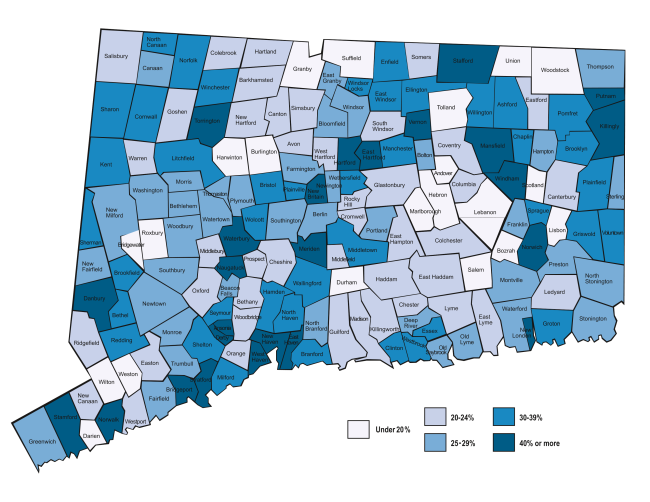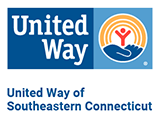The Connecticut United Ways’ 2020 ALICE Report Lays Bare the Severity of the Economic Challenges Facing Many Families in the State and Outlines Proven Strategies to Move These Families Toward Financial Security
Before the COVID-19 pandemic arrived this year, 38% of Connecticut residents were already struggling to make ends meet.
Those are the findings of Connecticut United Ways’ 2020 ALICE Report, a study on financial hardship.
The new report concludes that before the onset of the pandemic, 38% of Connecticut’s households lacked the income to pay for necessities such as housing, food, childcare, health care, technology, and transportation. That number includes those families living at or below the federal poverty level and the 27% who live above it but below the basic cost of living threshold. United Way calls these households ALICE, an acronym that stands for, Asset Limited, Income Constrained, Employed.
Click below to download and read the following now:
- Full 2020 Connecticut ALICE Report
- ALICE Executive Summary
- Our local, United Way of Southeastern Connecticut catchment area, stats
- United Way of Southeastern Connecticut ALICE Relief Fund
- Full story on the new ALICE Report featured in The Day on 9/6/2020

The report further demonstrates the now exacerbated economic vulnerability of many Connecticut residents, who, in addition to dealing with longstanding financial challenges, are now also struggling with furloughs, job losses, and an inability to pay bills and provide for their families.
“ALICE workers are essential to the vitality of our communities. Despite working hard, many ALICE workers are not able to earn enough to keep pace with the high cost of living in Connecticut and the COVID-19 pandemic has exposed just how many families are walking a financial tightrope.” Richard Porth, CEO, United Way of Connecticut
The report uses data from a variety of sources, including the U.S. Census and the American Community Survey, to quantify the households in Connecticut’s workforce that are struggling in this way.
The 2020 Connecticut ALICE Report takes a deep dive into the growing financial challenges that require more and more families to make tough choices every day as they manage their household budgets. Consider these findings, which were made prior to the pandemic, in the new ALICE Report:
- 38% of Connecticut households (513,727) cannot afford the basics of housing, food, health care, child care, and transportation. (This includes both ALICE households and those below the poverty line.)
- Despite working hard, 27% of Connecticut households (367,175) have incomes above the federal poverty level but below the ALICE threshold.
- In 148 of Connecticut’s 169 towns and cities, at least 1 in 5 households are below the ALICE Threshold.
- It now costs more than $90,000 a year for a family of four with one infant and one toddler to pay for the basic needs in the ALICE Household Survival Budget.
- Connecticut’s high cost of living is a big part of the ALICE story, especially for housing and child care.
- 55% of jobs in Connecticut pay $20 per hour or more, which is among the highest in the country, but only two of the top 20 occupations in Connecticut (in terms of number of jobs) pays enough to support the ALICE Household Survival Budget for a family of four.
- 52% of workers in Connecticut are paid hourly. These workers are more likely to have fluctuations in income, with frequent schedule changes and variations in the number of hours available for work each week/month.
Percentage of Households Below the ALICE Threshold By Town
ALICE lives in every town and in city in Connecticut
In addition, the new ALICE Report reveals the following trends affecting ALICE:
- A disproportionately high percentage of Black and Hispanic households live below the ALICE Threshold (57% of Black households and 63% of Hispanic households).
- A growing number of households live on the edge of the ALICE Threshold. In Connecticut, 13% of households were on the cusp of the ALICE Threshold, with earnings just above or below it.
- Many jobs will require an increasing ability to incorporate new technologies, work with data, and make data-based decisions, which means that ALICE workers need more access to upskilling, on-the-job training, and work-based training opportunities, consistent with the direction Connecticut Governor Ned Lamont’s Workforce Council is taking.
- ALICE families are more vulnerable to an emergency, because it is becoming more difficult to save and build assets.
With the release of the fourth Connecticut ALICE Report and the unprecedented human and economic loss brought by COVID-19, Connecticut United Ways continue to work toward short- and long-term solutions that provide a hand up for ALICE families and strengthen our communities.
- Connecticut United Ways launched the COVID-19 Response Fund at the beginning of the COVID-19 Pandemic. The fund is working in tandem with other philanthropic efforts being coordinated statewide and is rapidly deploying financial resources to members of ALICE households who have been economically affected by the pandemic, including those who are out of work or have reduced work hours.
- Connecticut’s United Ways are helping working families to increase their financial security and build their assets and savings. Together, Connecticut’s United Ways launched ALICE Saves, an initiative that offers monetary rewards and other incentives for savers, and provides them with free financial coaching. To learn more, visit ctalicesaves.org.
- United Ways provide financial education and support tax preparation at Volunteer Income Tax Assistance sites where eligible families can secure tax credits, such as the Earned Income Tax Credit (EITC) and the Child Tax Credit (CTC).
- United Ways in Connecticut engage thousands of volunteers in their communities, bringing people together to help improve grade-level reading and financial literacy, reduce homelessness and hunger, and advocate for quality, affordable childcare.
- United Ways advocate for long-term policy solutions that can lead to more financial security for ALICE.
- United Ways engage with businesses, government agencies, other nonprofits, the faith-based community, civic leaders, and anyone who wants to work toward individual and community-wide solutions that lead to more financial security for ALICE households.
The 2020 Connecticut ALICE Report is sponsored by The Hartford, Xerox, and Connecticut’s 16 United Ways. For more information or to find data about ALICE in local communities, visit http://alice.ctunitedway.org.
In addition, an online simulator is available at www.MakingToughChoices.org. It allows one to step into the shoes of a typical ALICE family and experience the difficult financial decisions ALICE families face every day.
